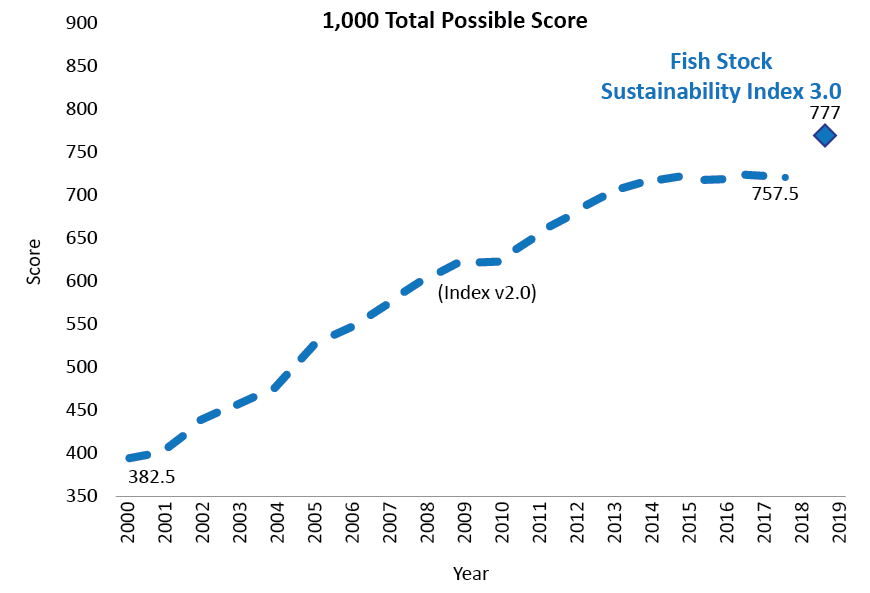Part 7: Using Stock Indices
Fishery biologists sometimes employ an index to help assess the general state of a stock. The index is usually an indirect measure of the stock taken the same way at the same time over many years. The index can be compared to the catch in the fishery or other data to see if there is a relationship between the index and the health of the fishery.
Fish Stock Sustainable Index
NOAA Fisheries also assesses the stock health for approximately 500 fisheries. Quarterly, NOAA Fisheries updates stock health for 175 fish stocks most important to U.S. commercial and recreational fisheries based on any recent assessments. The Fish Stock Sustainable Index (FSSI) is intended to identify the sustainability of those stocks – overfished, subject to overfishing, or rebuilt. The goal is to have stocks at maximum sustainable yield. The status of some of the stocks – 20 of the 175 – is unknown. The quarterly updates are available online.

Source: NOAA Fisheries
The sustainability of the stock is indicated by a point system (shown in the last column of the chart produced each quarter). The stock gets points for having its fishing status known, for not being overfished or experiencing overfishing, and for being at 80% of MSY. The higher the points (a maximum of 4), the better the stock’s health.
| Criteria | Criteria Points |
| 1. “Overfished” status is known. | 0.5 |
| 2. “Overfishing” status is known. | 0.5 |
| 3. Overfishing is not occurring (for stocks with known “overfishing” status). | 1.0 |
| 4. Stock biomass is above the “overfished” level defined for the stock. | 1.0 |
| 5. Stock biomass is at or above 80% of the biomass that produces maximum sustainable yield (BMSY)* | 1.0 |
Source: NOAA Fisheries
NOAA Fisheries also assesses stock health for 286 other fish stocks, known as non-FSSI stocks, which are not as economically significant to the domestic fishing industry. They are not included in the index.
Other Indices
One of the better-known fishery indices is the juvenile striped bass index. Since the 1950s biologists have sampled streams surrounding Chesapeake Bay where striped bass spawn and have counted the number of recently hatched fish caught with standardized methods. The index closely follows the decline in the striped bass fishery with a three-year lag (striped bass do not appear in the fishery as recruits until they are three years old). An increase in the index is assumed to indicate improvements in the stock.
Other indices use number of eggs, number of larval fish, or actual counts of fish through aerial, underwater, or acoustic (fish finder) surveys. One issue with basing an index on the early life history of a fish is that many things can happen to the fish before they become recruits.
« Go to Part 6 | Part 7: Using Stock Indices | Go to Part 8 »
